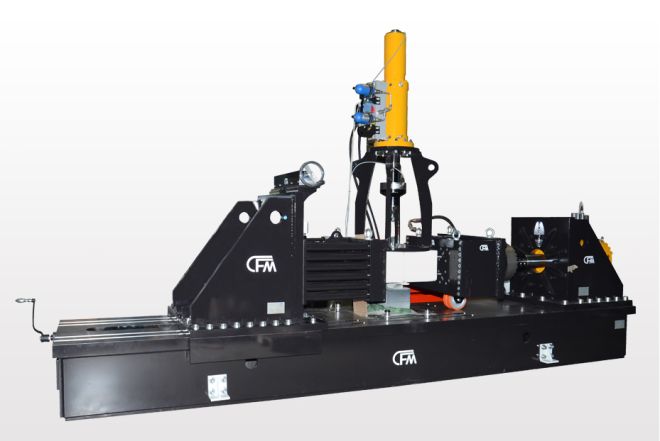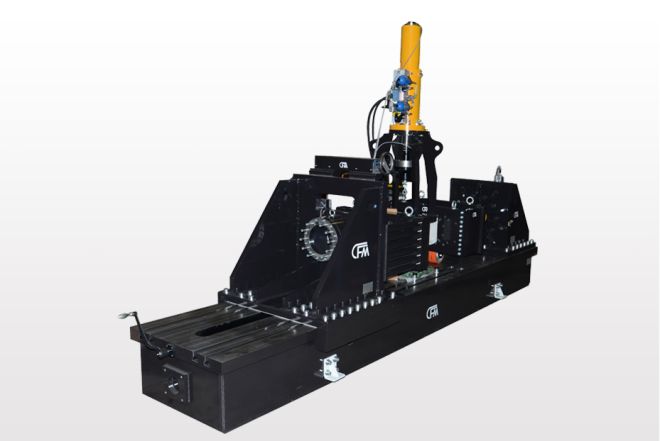ANCHOR TENSILE TEST RIG
This article is about anchors (British English: wall plugs), an insert used to attach screws into materials like concrete – not to be confused with the device for vessels
The European guideline ETAG 001 precisely defines requirements to experimental examinations of the load bearing behavior and the fatigue limit of metal anchors. There is also a high demand for precision testing of plastic anchors. In this context, CFM Schiller has developed and manufactured an anchor test rig for tensile and shear tests, applicable for cracked and non-cracked concrete. The test rig is capable of applying, varying, and evaluating all relevant load cycles for the fastener and the concrete body.
Basic components are the mechanical load frame structure comprising a highly stiff clamping plate and thereon mounted reaction brackets as well as servo-hydraulic actuators, sensors, and the closed-loop control system. The test rig applies testing forces up to 1 500 kN into the reinforcement of the concrete body, into which the anchor specimen is anchored. This force manipulates the crack width in the concrete. Another hydraulic actuator loads the specimen with tensile or transverse forces up to 250 kN. This actuator is dimensioned for medium dynamics in the range of 0-10 Hz. Concrete specimens of various sizes can be tested thanks to height adjustability of the transverse force actuator, a manifold hole pattern for adaption of the reinforcement bars, and horizontal adjustment of the reaction bracket about 1 220 mm. The hydraulic power unit has also been laid out under the principle of maximum flexibility and efficiency. Energy consumption can be adapted to the effectively needed power by adjusting the parameters operating pressure and rotational speed of the pump. In Eco Mode, the control system automatically adjusts the power consumption. The quiet internal gear pump contributes to the test rig’s environmental friendliness. If an additional acoustic insulation is required, CFM Schiller will provide a special acoustic insulation housing.


